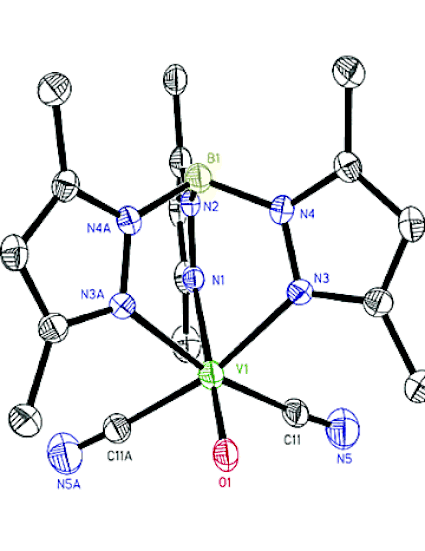
Article
Early Metal Di- and Tricyanometalates: Useful Building Blocks for Constructing Magnetic Clusters
Inorganic Chemistry
(2006)
Abstract
Treatment of mer-VCl3(THF)3 with KTp* [Tp* = hydridotris(3,5-dimethylpyrazol-1-yl)borate], followed by tetraethylammonium cyanide, affords [NEt4][Tp*VIII(CN)3]·H2O (1); subsequent air exposure affords [NEt4][Tp*VIV(O)(CN)2] (2). Treatment of 2 with MnII(OTf)2 (OTf = trifluoromethanesulfonate) and 2,2‘-bipyridine affords the rectangular cluster {[Tp*VIV(O)(CN)2]2[MnII(bipy)2]2[OTf]2}·2MeCN (3). Magnetic studies indicate that 1−3 exhibit S = 1, 1/2, and 4 spin ground states, respectively.
Disciplines
Publication Date
2006
DOI
10.1021/ic051630a
Citation Information
Stephen Holmes, Dongfeng Li, Sean Parkin, Guangbin Wang, et al.. "Early Metal Di- and Tricyanometalates: Useful Building Blocks for Constructing Magnetic Clusters" Inorganic Chemistry Vol. 45 Iss. 7 (2006) p. 2773 - 2775 Available at: http://works.bepress.com/stephen-holmes/27/
